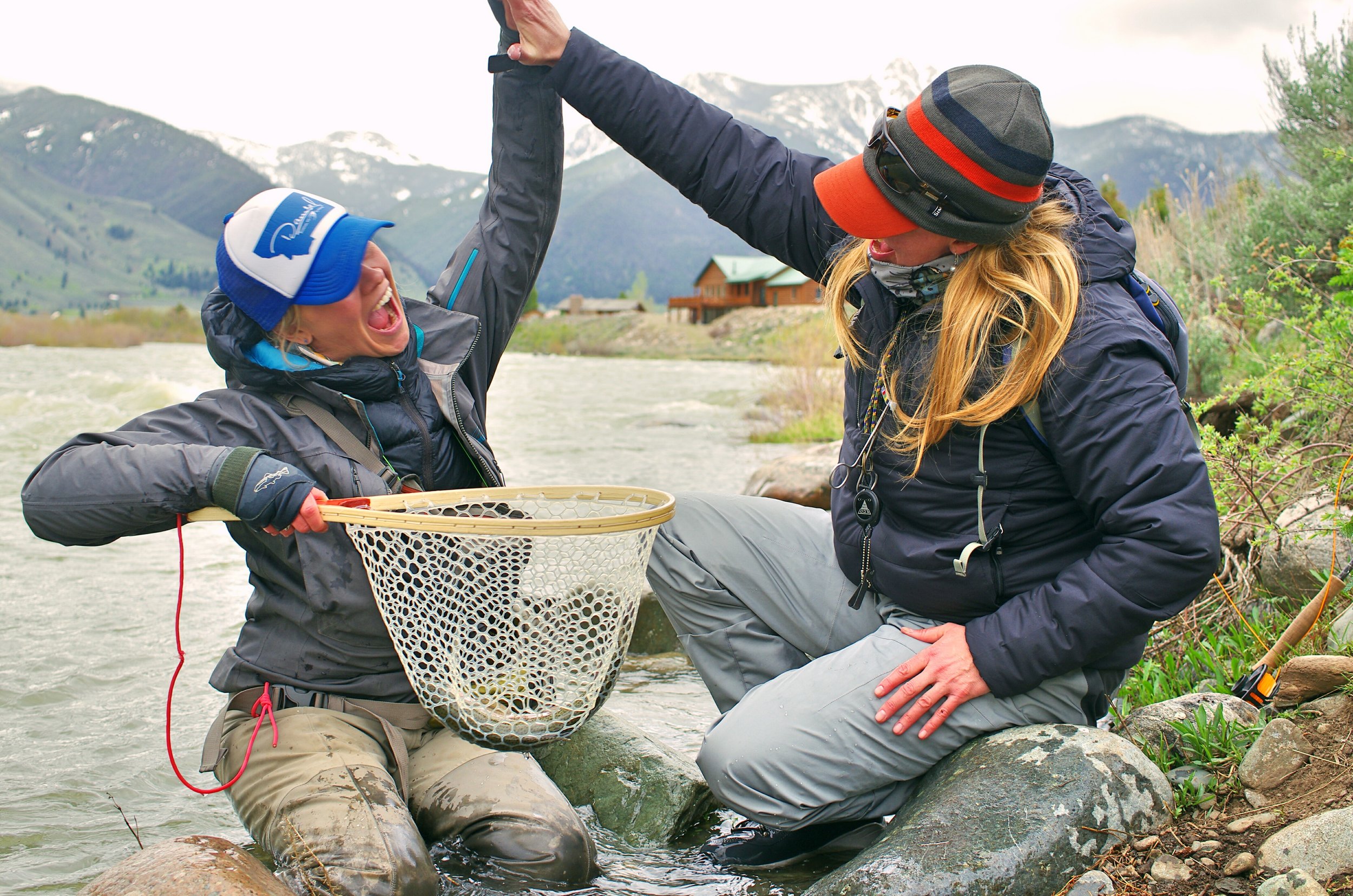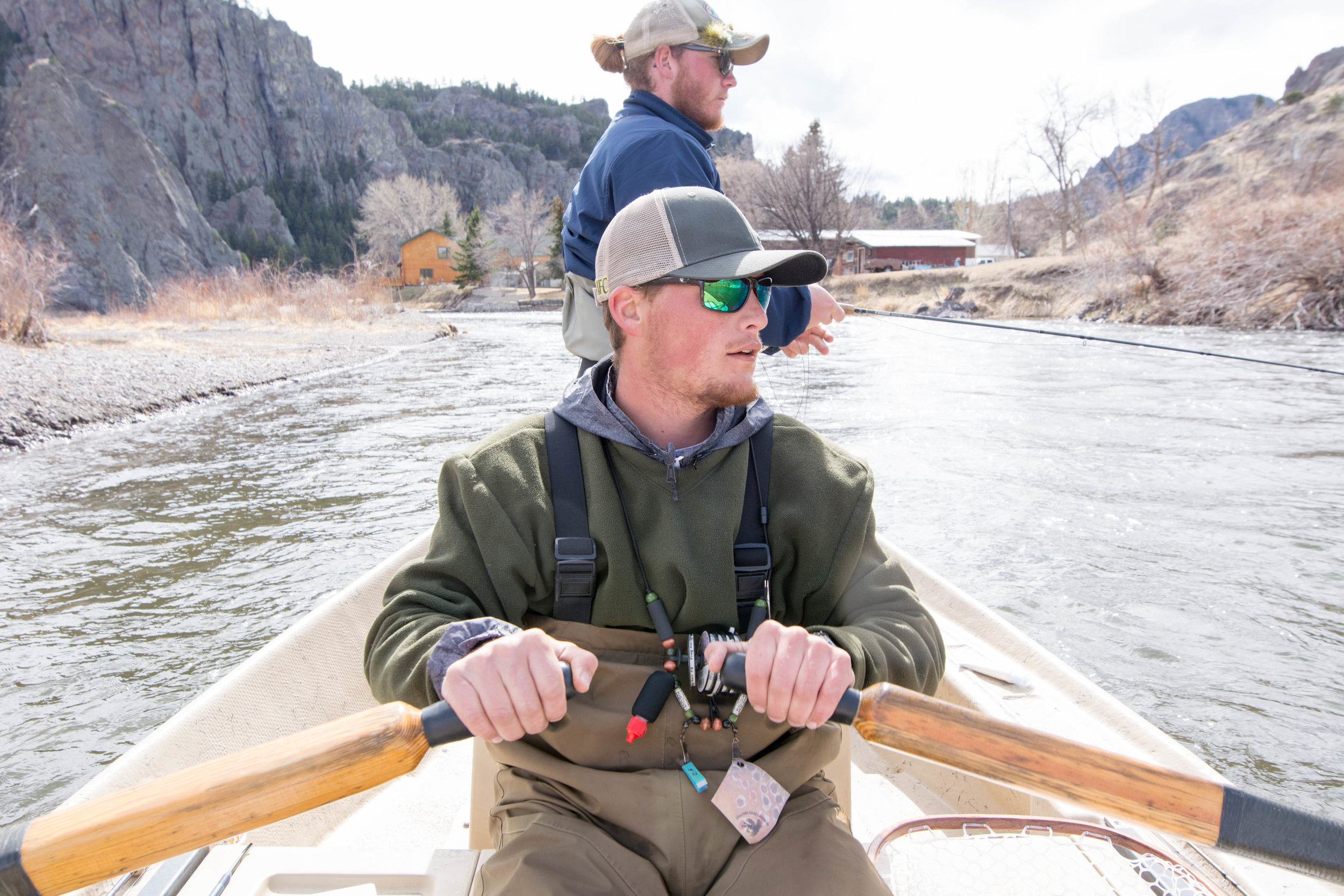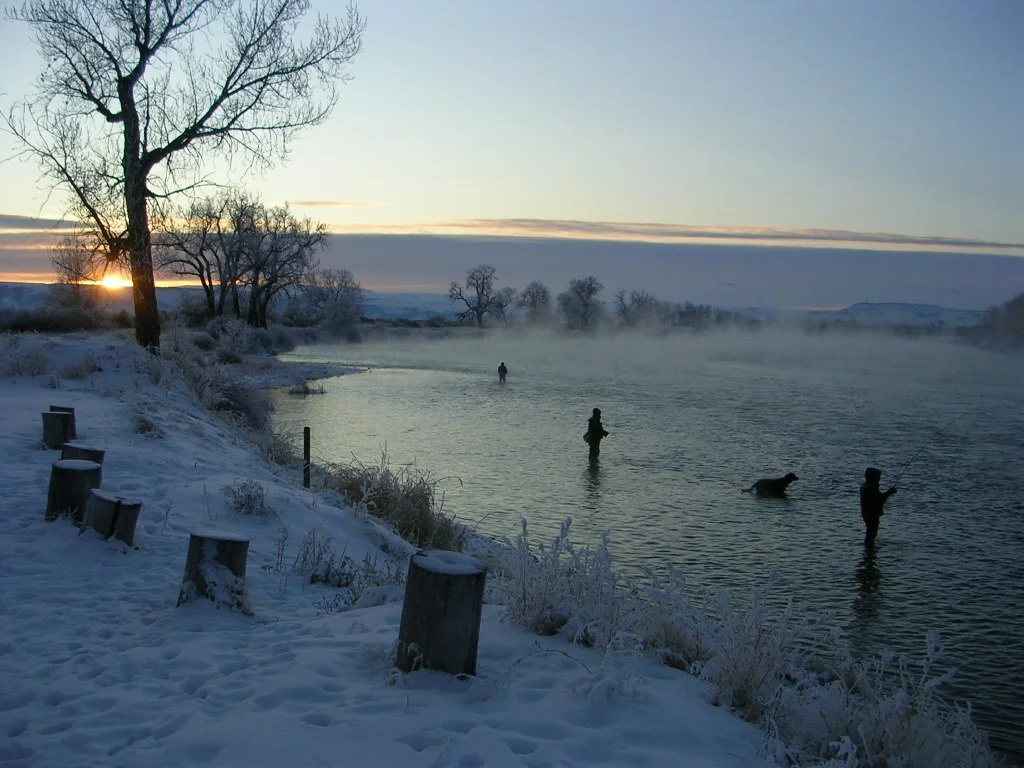“Our philosophy is simple. Guide education, time on the water, and hard work result in the best experience for guides and clients. The recipe for a successful fishing guide starts with a strong work ethic, patience, and the desire to work with people. After that, it’s equal parts teacher, psychologist, naturalist, entomologist, business owner, and safety consultant.”
Curriculum
What You Will Learn
Our school model was honed through years of guiding and outfitting, business management, and working throughout all levels of the outdoor education industry. Our curriculum is constantly adapting to industry trends and incorporates innovative teaching methodology, fishing techniques, and ways to put better guides on the water.
Guide and Client Relations
Understanding the reasons people fish is paramount to being a great guide. Being able to understand and read your clients is arguably the most important aspect of any guide. People fish for many reasons: to catch big fish, learn a new skill, as part of a bucket list, to introduce a friend, offspring, or spouse to the sport, and the list goes on. For many, catching the most or biggest fish may not be the yard-stick of success, rather a successful day on the water may be just that-a day on the water. For you, as the guide, how do you know? Through our unique experiences we will help you hone these very important skills.
Managing Your Book of Clients & Personal Calendar
Repeat clients and client referrals are the lifeline of a career in guiding. Guiding weeks in a row is a fact of life. There are several ways to build your list of repeat clients and also get them to make referrals. This is a year-round endeavor. We've developed some solid guidelines for managing your client base, your booking calendar, and working with various shops and outfitters.
Technical Guiding Fly Fishing Aspects
Guides have to be the best on the water in rigging gear, knowing how to teach casting, and adapt all fishing skill levels to the most effective methods. The core of our technical fishing instruction lies in the following:
FLY CASTING INSTRUCTION STRATEGIES
A focus on the various ways people learn: Some by feel, some by words, most by some combination of both.
KNOT TYING
Guides must be able to rig all types of leader and fly set-ups . . . and do it quickly. Learn the tricks of our pros so you can spend less time rigging and more time getting your clients into fish.
MEANS OF FISHING
In-depth instruction and practice in the following methods:
Deep nymphing
Shallow water, sight nymphing
Dry fly head-hunting to rising fish
Dry fly prospecting, for example casting to structures rather than prospecting
Two-fly dry-fly fishing
Deep water streamer fishing
Small stream streamer fishing
TIPS FROM THE PROS
Packing a cooler, packing your kit bag, and more
TRAILER BACKING AND BOAT RAMP PROCEDURES
The Business of Guiding
Guiding is both a monetary and emotional investment. It requires long, seasonal hours away from family and friends. Did you also know things like liability insurance coverage, Worker's Compensation insurance, and self-employment taxes are part of guiding? The necessities are also expensive: a boat and trailer, a rig to haul boat and trailer, full-functioning gear, and more. There is also the initial investment of time on the water.
Then, once you get a season or two under your belt, there is managing your finances and accounting to make the money you made get you through to next season. This part of the course will cover all the business aspects of guiding.
Rowing A Boat To Catch Fish
There are two ways to row a boat: to get from put-in to take-out, and to get your clients into fish. Our course is weighed heavily on using the boat as a tool to catch more fish. Guides must be comfortable on the oars, doing everything from getting safely down the river to rowing at the right effectiveness to catch fish. Time is spent on rivers with rapids up to Class III rapids and learning the ability to read, navigate, and understand the ever-changing environment of a wild river. Our on-the-water, on-the-oars course curriculum is demanding. You will be challenged in your ability to put your boat onto fish. But this philosophy will give you confidence when you are on the river with your first pay-load. Discussions on the type of boat will also be important-whether you need a raft or hard-sided drift boat.
CPR and First Aid Certification
These two credentials are required for nearly any professional guide's license in any state. We have an on-staff instructor. Insurance companies also require guides to be first-aid certified. Incorporating this into the class also streamlines your state's guide license application process.
Entomology and Fish Feeding Habits
A PhD is not required to catch fish or guide. But, a thorough understanding of trout foods, their feeding habits, and insect habitat is essential in being a confident and competent guide. Our instructors are entomologists and trout food and habit experts. Get down and dirty with what trout eat.
Marketing Yourself and Your Services
Success in this business hinges on being good at what you do. There is also a lot to be said for knowing the right people in the right places. We are firm believers in that success breeds more success. If you are doing a great job on the water, work will come your way. But how do you get your foot in the door and ensure fly shops and outfitters know your name? We know the tricks of the trade and through our broad experience in the industry, we know most everyone.
River Safety
Safety is the most important, yet most often under-appreciated aspect of guiding. Our instructors are whitewater experts, life-long river users, and have faced nearly every wilderness situation. Our understanding of safety on the water will help you guide with confidence and help you feel comfortable in any situation.
Finding Guiding Jobs & Getting Into the Biz
Montana Fishing Guide School works with fly shops, outfitters, and lodges. Graduates of our school will find they have a leg-up in competing for these coveted jobs. We will help you develop and polish your resume. We will also offer our personal recommendation and put you in touch with the outfitters, fly shop owners, and lodge operators. Our success depends on your success.
Employment, Job Placement, and Industry Networking
Our graduates find work doing what they love: Guiding! A core part of our curriculum is helping you find a job. We work with the West's best fly shops and outfitters to land you your dream job.
Streamside Ecology and Riparian Education
What makes a great trout stream and why should we protect it? Questions like these are the focus of our habitat coursework. You will learn and understand the vital elements of a healthy river and its environs. A basic knowledge of river geology is important to guiding. Discussions on human interaction and effects on streambeds and riparian habitat help you gain confidence in working with clients and local residents. You'll learn what makes a river tick; change from year to year; learn the pros and cons of factors like high-water, low water, tailwater fisheries; and more.
Variety, challenges, and plenty of fat trout
Our Classroom
Montana's Fishing Waters
Our classroom boasts world class fisheries and Montana communities that will not disappoint.The Gallatin, Madison, Yellowstone, and Missouri Rivers, as well as private lakes, spring creeks, and smaller freestone rivers offer some of the best opportunities to challenge your angling ability and learn the profession of guiding. We create our week's itinerary for daily on-the-water sessions based on what fishing options offer the most rewarding teaching opportunities.
Communities like Bozeman, Helena, Craig, and Big Sky have more fly shops and outfitters per capita than any region in the world-making them ideal locations for prospective guides. Toss in a wide selection of dining and lodging options, and it is clear the Montana Fishing Guide School's classroom is as "Montana" as it gets.











